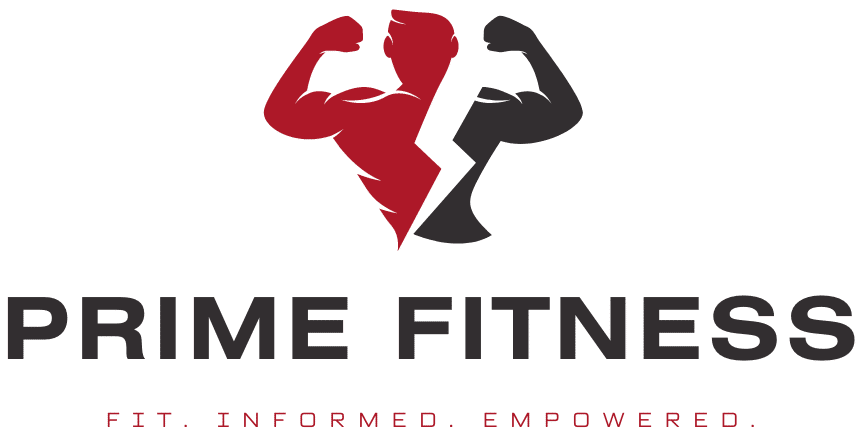In this article, you will learn various ways to measure your fitness progress and track your goals. You will explore different methods such as tracking your workouts, monitoring your body measurements, and using fitness apps. By the end, you will have a clear understanding of how to effectively measure your fitness progress and stay motivated on your fitness journey.

Why is it important to measure fitness progress?
Understanding the effectiveness of your workout
Measuring your fitness progress is essential to understand how effective your workouts are. By tracking your progress, you can determine if you are achieving the desired results from your exercise routine. This information allows you to make adjustments to your workouts to maximize their effectiveness.
Tracking your progress over time
Another important reason to measure your fitness progress is to track how you are improving over time. By keeping records of your measurements, you can see the advancements you have made in your fitness journey. This can be incredibly motivating and provide a sense of accomplishment as you see the positive changes in your body and performance.
Staying motivated and setting realistic goals
Measuring your fitness progress also helps to keep you motivated and set realistic goals. Seeing tangible results is a great motivator to keep pushing yourself during workouts. It provides a visual representation of your hard work and encourages you to continue striving towards your fitness goals. Additionally, measuring your progress allows you to set realistic and achievable goals, as you have a clearer understanding of your current fitness level.
What are the different ways to measure fitness progress?
Body composition analysis
Body composition analysis involves assessing the ratio of fat to muscle in your body. There are several methods to measure body composition, including skinfold calipers, bioelectrical impedance analysis, and DEXA scans. These measurements offer valuable insights into your body’s composition and can help you track changes in muscle mass and body fat percentage.
Physical performance tests
Physical performance tests assess various aspects of your fitness, such as cardiovascular endurance, strength, power, flexibility, and mobility. Examples of physical performance tests include running or cycling for a specific distance or time, performing strength exercises like push-ups and squats, and measuring your flexibility through stretches and range of motion exercises. These tests provide objective measurements of your physical abilities and can be used to gauge improvements over time.
Heart rate monitoring
Heart rate monitoring is an effective way to measure your fitness progress, especially during cardiovascular exercise. By tracking your heart rate, you can determine the intensity at which you are exercising. This information allows you to ensure that you are working within your target heart rate zone to maximize the cardiovascular benefits of your workout. Additionally, monitoring your heart rate can help you measure your aerobic fitness level and identify how quickly your heart recovers after exercise.
Tracking workout duration and intensity
Keeping track of your workout duration and intensity provides valuable information about the volume and intensity of your training. By recording the duration of your workouts, you can monitor if you are consistently meeting the recommended guidelines for physical activity. Additionally, tracking the intensity of your workouts helps ensure that you are challenging yourself sufficiently to make progress. This information can be gathered through heart rate monitoring, using rating of perceived exertion scales, or through wearable fitness trackers.
Keeping a fitness journal
Maintaining a fitness journal involves recording various aspects of your workouts, including exercises performed, sets and repetitions completed, and any notes about how you felt during the workout. A fitness journal can also include information about your nutrition, sleep patterns, and overall well-being. By tracking these details, you can identify patterns or correlations between your workouts and other factors that may impact your progress. Additionally, keeping a fitness journal allows you to track personal bests, improvements, and overall consistency in your exercise routine.
How can body composition analysis help measure fitness progress?
Measuring body fat percentage
Body composition analysis methods, such as skinfold calipers or bioelectrical impedance analysis, can provide an estimate of your body fat percentage. Monitoring your body fat percentage allows you to see changes in fat mass as you progress through your fitness journey. A decrease in body fat percentage may indicate a loss of excess fat, while an increase may suggest muscle gain or changes in body composition.
Calculating muscle mass
Body composition analysis can also help calculate your muscle mass. By monitoring changes in muscle mass, you can determine if your workouts are effectively building lean muscle. This information is particularly valuable if your goal is to increase muscle size, strength, or overall muscular definition.
Monitoring changes in weight
While monitoring changes in weight alone may not provide a complete picture of your fitness progress, it can still be a useful measurement when combined with other assessment methods. Fluctuations in weight can occur due to changes in water retention, muscle gain, or fat loss. Tracking changes in weight alongside other measurements can help you better understand the changes happening in your body.
What are some common physical performance tests to measure fitness progress?
Cardiovascular endurance tests
Cardiovascular endurance tests measure your body’s ability to sustain physical activity for an extended period. Examples of cardiovascular endurance tests include running or cycling for a specific distance or time, swimming laps, or performing a step test. These tests help gauge your aerobic fitness level and determine if your cardiovascular system is improving.
Strength and power assessments
Strength and power assessments measure your ability to generate force or exert power during specific exercises. Common strength assessments include testing your one-repetition maximum (1RM) in exercises like squats, bench presses, or deadlifts. Power assessments may involve measuring your vertical jump height or performing explosive movements like medicine ball throws. These tests are useful for tracking improvements in muscular strength and power.
Flexibility and mobility tests
Flexibility and mobility tests assess the range of motion in your joints and muscles. These tests can include the sit and reach test, shoulder flexibility assessments, or the deep squat test. By tracking improvements in flexibility and mobility, you can ensure that your exercise routine incorporates appropriate stretching and mobility exercises, which are essential for injury prevention and overall physical function.

How does heart rate monitoring contribute to measuring fitness progress?
Determining exercise intensity
Measuring your heart rate during exercise allows you to determine the intensity at which you are working. By comparing your heart rate to your maximum heart rate or target heart rate zones, you can ensure that you are working at the desired intensity to elicit specific cardiovascular or metabolic responses. Heart rate monitoring guides your exercise intensity to optimize the effectiveness of your workouts.
Measuring aerobic fitness
Heart rate monitoring is a valuable tool for measuring your aerobic fitness level. By tracking changes in your heart rate during the same exercise routine over time, you can assess improvements in cardiovascular efficiency. As your aerobic fitness improves, your heart rate will generally decrease for the same level of exercise intensity.
Identifying recovery rates
Heart rate monitoring can also help assess your recovery rates after exercise. By monitoring how quickly your heart rate returns to a resting level post-workout, you can gauge your cardiovascular fitness and how well your body recovers from physical exertion. A faster recovery rate generally indicates a higher level of fitness.
Why is tracking workout duration and intensity important for measuring fitness progress?
Monitoring training volume
Tracking workout duration helps to monitor your training volume and ensure that you are meeting the recommended guidelines for physical activity. The duration of your workouts can vary depending on your fitness goals and the type of exercise you are performing. By consistently tracking the duration of your workouts, you can ensure that you are dedicating enough time to exercise for optimal results.
Tracking calorie expenditure
Workout intensity is closely associated with calorie expenditure. By tracking the intensity of your workouts, you can estimate the number of calories burned during each exercise session. This information can be helpful if your goal is weight management or if you are following a specific nutrition plan. Tracking calorie expenditure provides a tangible measure of the effort you are putting into your workouts.
Understanding training adaptations
Monitoring workout duration and intensity allows you to understand the adaptations your body is making in response to exercise. By gradually increasing the duration or intensity of your workouts over time, you can stimulate various physiological adaptations, such as increased cardiovascular capacity or improved muscular strength. Tracking these changes helps you comprehend the progress you are making and adjust your workouts accordingly.

How can keeping a fitness journal help measure fitness progress?
Recording exercise routines
Keeping a fitness journal allows you to record details about your exercise routines. You can log the exercises you performed, the number of sets and repetitions completed, and any modifications or variations you made to your workouts. This information helps you track the exercises you regularly incorporate into your routine and provides a reference for future workouts.
Tracking personal bests and improvements
A fitness journal is an excellent tool for tracking personal bests and improvements. By recording your best performance in specific exercises or benchmarks, you can monitor your progress over time. This documentation of improvements helps to motivate and encourage you as you see tangible evidence of your hard work and dedication.
Documenting feelings and energy levels
In addition to exercise details, a fitness journal is an ideal place to document how you felt during and after your workouts. You can note your energy levels, any physical or mental challenges you faced, and how you felt overall. This information provides valuable insights into how your body responds to different types of exercise, helping you make adjustments to optimize your workouts.
What are the limitations of measuring fitness progress?
Inaccuracies in measurement methods
It’s important to recognize that some measurement methods can have inherent inaccuracies. Body composition analysis techniques, for example, may provide estimates rather than precise measurements. Additionally, other factors like hydration levels, time of day, and individual variations can influence the accuracy of measurements. It’s essential to understand the limitations of each measurement method and use them as tools to gain a general understanding of your progress rather than solely relying on them.
Individual variations and genetics
Individual variations in genetics, metabolism, and body composition can influence how you respond to exercise and how your fitness progresses. Some individuals may see significant changes in a short amount of time, while others may have slower progress. Comparing your progress to others may not always be meaningful or accurate. It’s crucial to focus on your own journey, set realistic goals, and celebrate your personal achievements.
External factors affecting progress
There are several external factors that can impact your fitness progress. Factors such as stress, sleep habits, nutrition, and overall lifestyle choices can influence how your body responds to exercise. It’s important to consider these external factors when measuring your progress and making adjustments to your fitness routine. Maintaining a healthy and balanced lifestyle outside of your workouts is integral to achieving long-term progress.

Tips for effectively measuring fitness progress
Set specific and measurable goals
When measuring your fitness progress, it’s essential to set specific and measurable goals. These goals should be achievable and aligned with your overall fitness objectives. By having clear goals in mind, you can track your progress more effectively and stay motivated throughout your fitness journey.
Create a consistent measurement routine
Consistency is key when measuring your fitness progress. Establish a regular measurement routine that suits your needs and schedule. This can involve measuring your body composition, performing physical performance tests, or tracking your heart rate and workout duration. By consistently measuring at regular intervals, you will have more reliable data to assess your progress.
Use a combination of measurement methods
To capture a comprehensive understanding of your fitness progress, consider using a combination of measurement methods. Utilize body composition analysis, physical performance tests, heart rate monitoring, and workout duration and intensity tracking. By utilizing multiple methods, you can gather diverse insights into your progress, ensuring a well-rounded assessment.
Seek professional guidance if needed
If you are unsure about how to measure your fitness progress or interpret the results, it’s always beneficial to seek guidance from a fitness professional. They can provide expert advice and help tailor a measurement routine that aligns with your goals. Additionally, they can offer insights into your progress and assist with making adjustments to your workouts for optimal results.
Conclusion
Regularly measuring fitness progress is crucial for tracking improvements and staying motivated on your fitness journey. Utilizing various measurement methods such as body composition analysis, physical performance tests, heart rate monitoring, tracking workout duration and intensity, and keeping a fitness journal can provide valuable insights into your progress. However, it’s important to understand the limitations and consider individual variations. By setting specific goals and consistently measuring your progress, you can effectively monitor and achieve your fitness goals. Keep pushing yourself, and celebrate your progress along the way!






